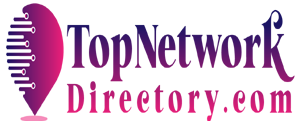Did you know that the quality of onboarding can help determine a person’s success and happiness at a company?
The onboarding process is an important time that companies like to speed through because they have positions to fill.
If you want quality candidates and committed staff, you should consider improving your training.
Keep reading if you want to learn the most critical phases for improving employee onboarding!
Prepare for Pre-Onboarding
One of the best practices for improving employee onboarding is to prepare before the onboarding.
Pre-onboarding is the time when you need to interview and find a job candidate. This phase starts from the first interview and lasts up until the person’s first day on the job. During this time you must focus on communication and attention to detail, you should also get HR and payroll started with the paperwork.
You can learn more about onboarding and finding the perfect candidates.
Set the Tone
If you want to use the best onboarding practices, you should set the tone from day one.
Welcoming new hires and introducing them to the team is essential. Whether your employee is in the office or working from home, you can help them feel comfortable. Many people recommend inviting new staff to team meetings so that they can learn the language and culture of the company.
Try not to overlook this detail, especially if you don’t want to risk a high turnover.
Implement Training
In an automated onboarding process, you can have training done online with modules.
Online modules and videos are great for training, however, you can’t solely rely on them. Hands-on training is needed for most jobs, especially in the service industries. Have a training plan prepared in advance and work with your team so that your new hire gets the entire scope of the company.
Most people try to rush through training, and this often results in turnover and unsatisfied employees. The more time and thought that you put into your training, the better results you will get.
Allow for a Smooth Transition
Since most people don’t become an expert on the job from day one, you need to provide time for a smooth transition.
As the new employee starts learning their role and expectations, you can give them more responsibilities. You must keep communication lines open so that staff doesn’t feel over or under-challenged.
Asking for feedback from employees can also aid in transitions. When you understand the struggles that previous and new hires are experiencing, you can adapt.
Improving Employee Onboarding in a Simple Way
When it comes to improving employee onboarding, you need to understand to most critical phases.
From pre-onboarding to training completion, you can prepare your staff for success. There is a lot of paperwork and internal details to attend to before your new member has their first day. By giving yourself time to prepare, you can teach your staff and build up their confidence.
Don’t underestimate the importance of training and always be mindful of your company culture.
Be sure to read our blog for more content about the employee onboarding process and running a company!

